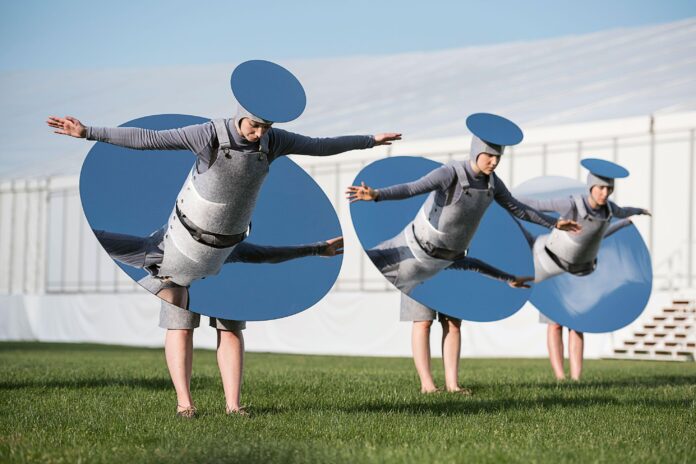Latin American Artists: From 1785 To Now, Raphael Fonseca (contributor), Phaidon, 352pp, £49.95 (hb)
Phaidon is known for its accessible art canon surveys that provide readers with digestible information about an art history genre or geographical hub. This extensive overview includes more than 300 Modern and contemporary artists born or based in Latin America such as Julieta Aranda (Mexico), Eduardo Navarro (Argentina), Artur Lescher (Brazil) and Violeta Parra (Chile). “All artists here produced their work between the beginning of the 19th century and contemporary times,” writes Raphael Fonseca in the introduction, highlighting certain schools. “A significant part of this generation [in the 20th century] explored the notion of intimacy in their research. It is interesting, for example, to look at queer poetics with a diaristic nature by artists such as Feliciano Centurión […] Julio Galán and Hudinilson Jr.”

The Upside Down World: Meeting with the Dutch Masters
The Upside Down World: Meeting with the Dutch Masters, Benjamin Moser, Allen Lane, 400pp, £30 (hb)
The US writer Benjamin Moser gives his take on the big names of the Dutch Golden Age, painting a picture of “the stormy Rembrandt, the intimate Ter Borch, the mysterious Vermeer”. His fascination with such seminal artists began during a visit to the Netherlands 20 years ago, prompting him to explore the “hidden world” of the Dutch masters. Moser attempts to answer big questions via his investigations, such as: “What does it mean to succeed as an artist, and what does it mean to fail?” The critic Hilton Als says in a statement: “Part memoir, part critical and historical analysis, the book also offers a superb commentary… on what it means to be displaced in a never entirely whole world, and what it means to see between the cracks.”

Earthly Delights: A History of the Renaissance
Earthly Delights: A History of the Renaissance, Jonathan Jones, Thames & Hudson, 336pp, £30 (hb)
Is there anything left to say about the Renaissance? The Guardian critic Jonathan Jones thinks so, presenting “a new, narrative history of the Renaissance that takes in the whole of Europe and its global context”, according to a publisher’s statement. “Renaissance eyes are fixed on this life, not the next. This is the art of a Europe discovering the world and itself,” Jones writes in the introduction. The author surveys a wide range of artists and key paintings, providing his own perspective on masterpieces such as Donatello’s Judith and Holofernes (1455-60) sculpture in Florence. “It’s not that Judith or David are perverse celebrations of sensuality. To claim this simplifies the contradictions that make these masterpieces from six centuries ago still throb with artistic life,” Jones writes.

Shan map from around 1889 Reproduced by permission of the Syndics of Cambridge University Library
Burma to Myanmar, Alexandra Green (ed), British Museum Press, 272pp, £35 (hb)
Ahead of a major exhibition in November, this catalogue focuses on the history of Myanmar (Burma), beginning around AD450. Alexandra Green, the curator for Southeast Asia at the British Museum, says in a statement: “We look at some of the key issues and individuals that people in the UK have heard of in relation to modern and contemporary Myanmar, including why it isolated itself from the world for 60 years, [encompassing] Aung San Suu Kyi, and the persecution of the Rohingya [Muslim ethnic minority group].” Crucially the exhibition and catalogue examine the impact of British colonisation—between 1826 and 1885—on the numerous cultures of the region. Key objects featured include a bust of General Aung San, the leader of the Burma Independence Army; a Green Burmese python sculpture made by Soe Yu New; and a Shan map showing a border dispute between Burma and China.
Philanthropy in the Arts: A Game of Give and Take, Leslie Ramos, Lund Humphries/Sotheby’s Institute of Art, 104pp, £19.99 (hb)
The latest publication in the Hot Topics series (full disclosure, I am the author of one of them, titled Censored Art Today) “provides an essential guide for collectors, philanthropists, and patrons, as well as art-market and museum professionals, on the peculiarities of giving and taking in the arts sector”, according to the publisher’s statement. The book covers other topics such as what successful artists do to help others. “The generosity of artists to give back, particularly to their own communities, is not only a silver lining to the multi-billion-dollar global art market but it is also one of the most important aspects of the future of arts philanthropy,” Ramos writes, giving UK artist Tracey Emin as an example. The author also highlights important new philanthropists in the United States including Sarah Arison and MacKenzie Scott, the former wife of Amazon mogul Jeff Bezos.

























